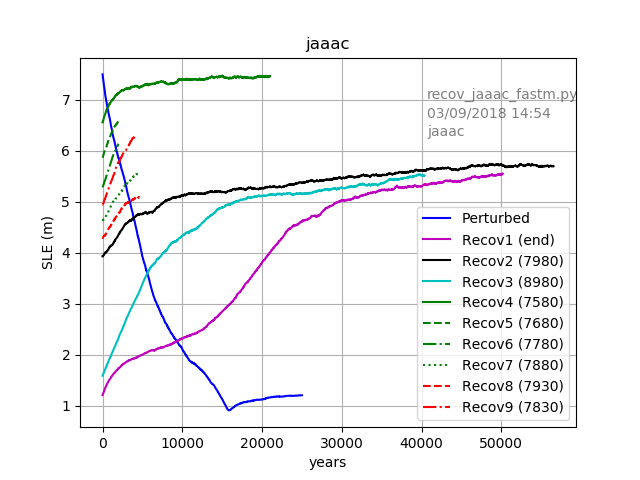
The results are
indicative as to the recovery mode being a functon of both initial
ice mass and ice configuration
(e.g., Recov6 initializing with a mass
lower than that of Recov2 final state, but quickly exceeding Recov2).

Looking at the ice state (trans=transient, final plot, 4=2-3):

The inital Recov6 state is essentially a slightly shrunken ice-sheet
with coastal erosion; seemingly predisposed to recover.
Recovery
from a heavily eroded ice-sheet is seemingly problematic in NE Greenland.
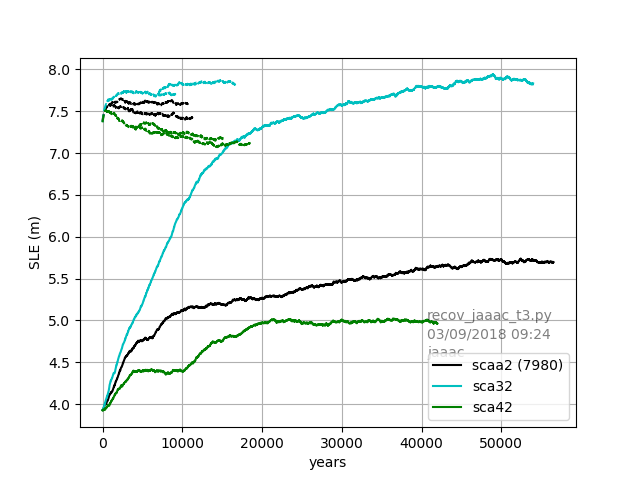
Two of the parameterisations lead to a reduced icesheet, but one has
a full recovery. The inset plots are the
CTL model runs on further
(they weren't completely spun-up). Zoomed in:
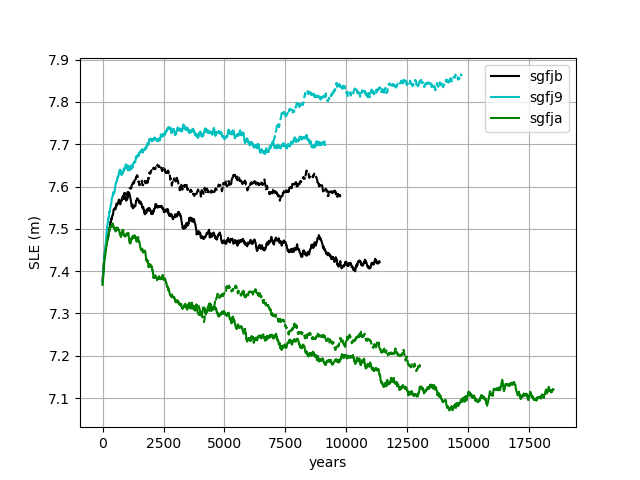
The bifurcation of each line is due to a change of executable. The original
CTL runs were performed without the
inland sea fix (i.e. not treating
it as ocean), so I span off new version with this change (upper paths).
The differences were a bit confusing, because the inland "sea" is
covered in ice in all simulations. Checking further,
there are a
coupled of below-sea-level coastal drainage regions (red and blue plot):
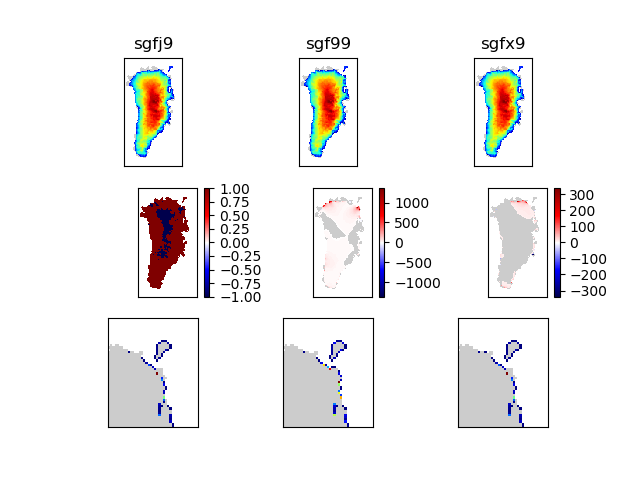
The calving edge retreats up these channels in the original runs (compare
calving edge in bottom grey/blue plots).
Mass/volume differences
associated with drainage/calving in second row/column difference plot.
Returning to the three-albedo recoverty plot, the end-states for the (new) CTL and perturbed are:
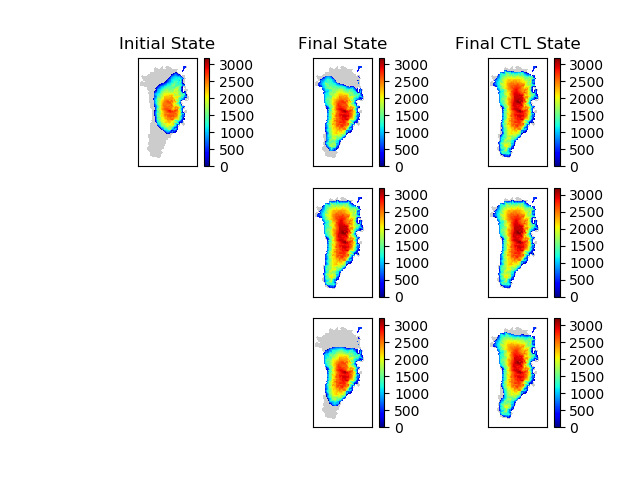
(row colour order with respect to earlier plot: black, cyan, pink).
The final states of the black and pink runs are roughly the same, except
for the NW ice formation of the former.
The cyan runs essentialy recovers
to its own control which pretty much fills the "observed" window (grey).
The location of the extra mass in the cyan CTL versus the black can be seen here:
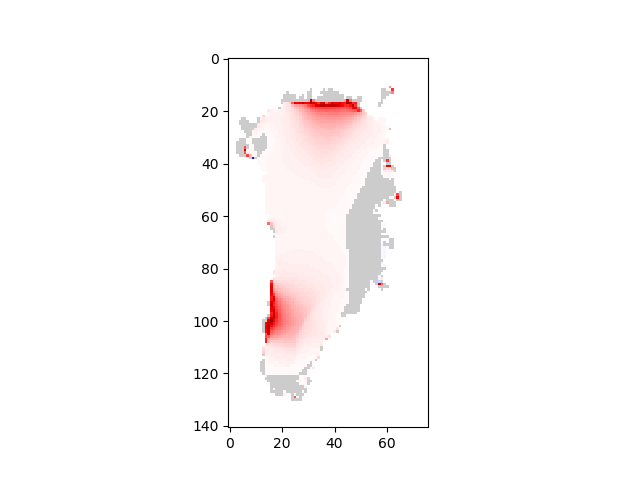
It's still not clear to me how one judges the validity of each control ice-sheet. What albedoi
parameterisation one chooses has
a big effect on recovery
likelihood.
With reference to jaac recovery runs that end in a mid-volume state; they all end up with
the NW mass externsion (in some form).
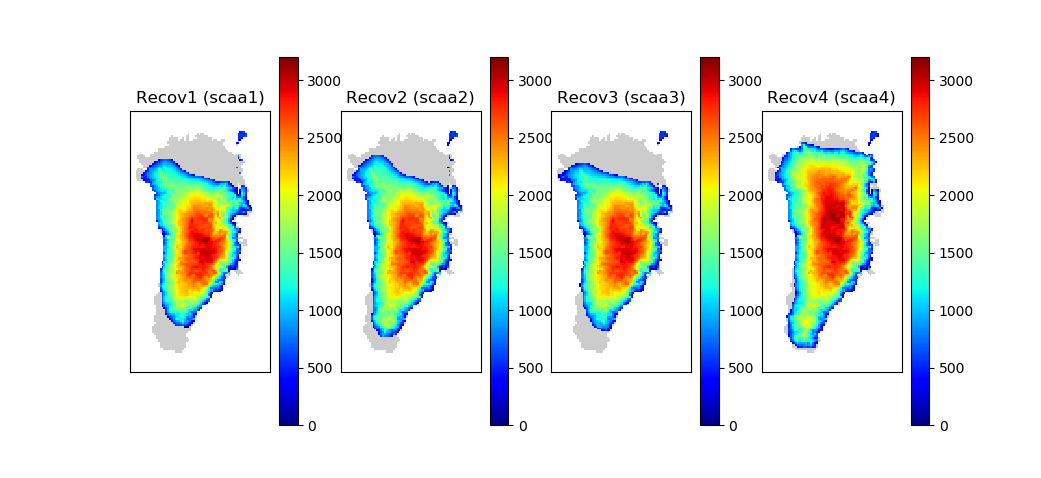
I repeated the scaa2 variant recovery run with alternatice boundary forcing (HadGEM,CanESM2).
The CTL states are generally similar, with the recovery similar (in the config), but slower:
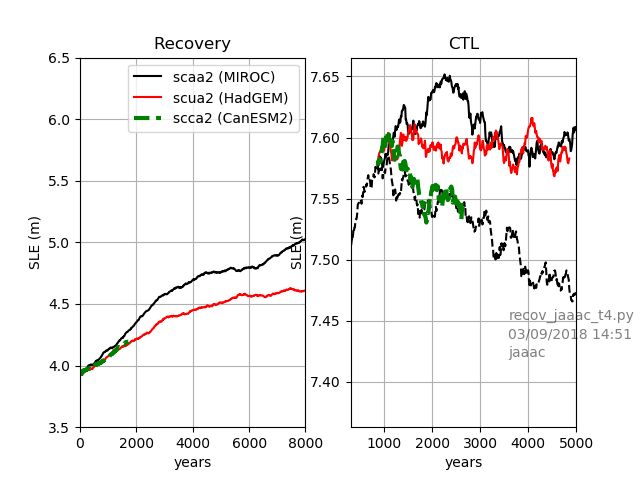
The slower recovery maybe due to the lack of the NW mass buildup (still transient):
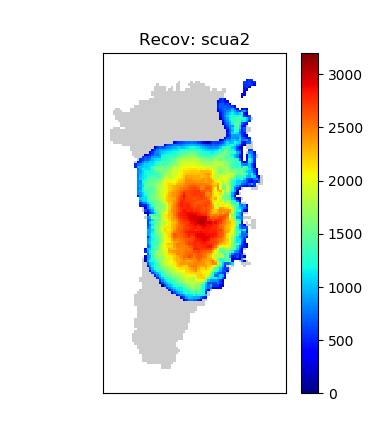
This NW build is instigated by ice outflow, separation, devlopment, then rejoin (tstep 10-years,
thresholded thickness):
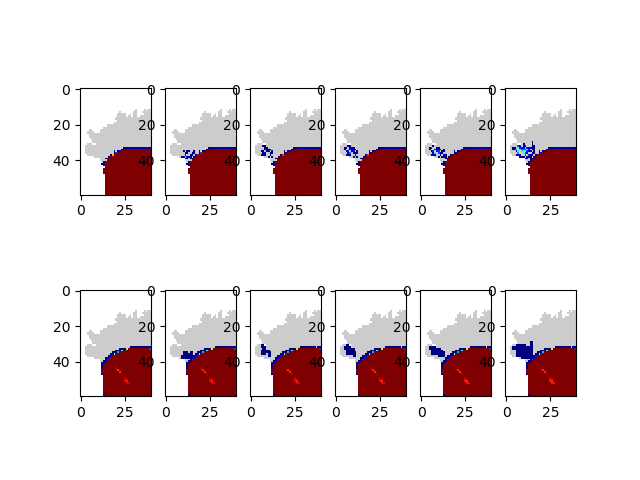
Ice thickness threshold: 1e-23m.